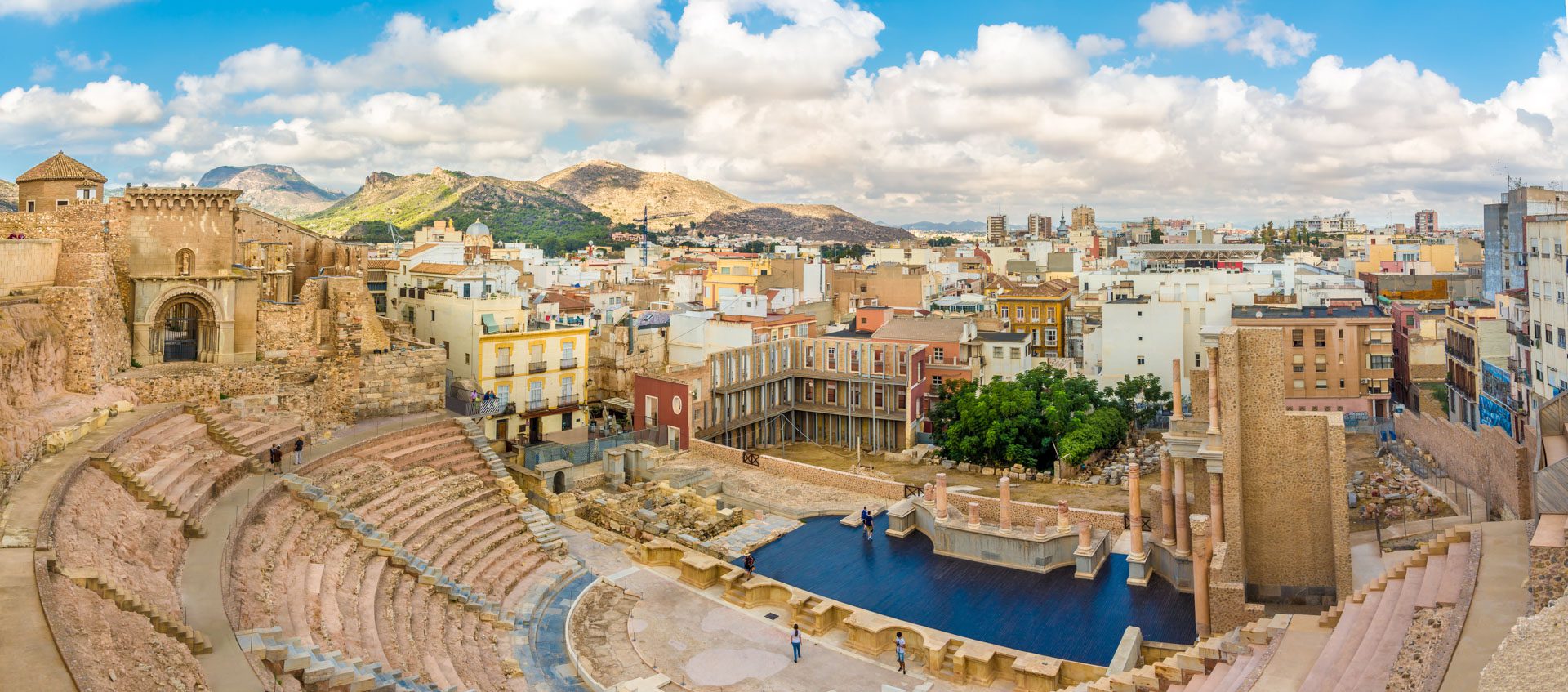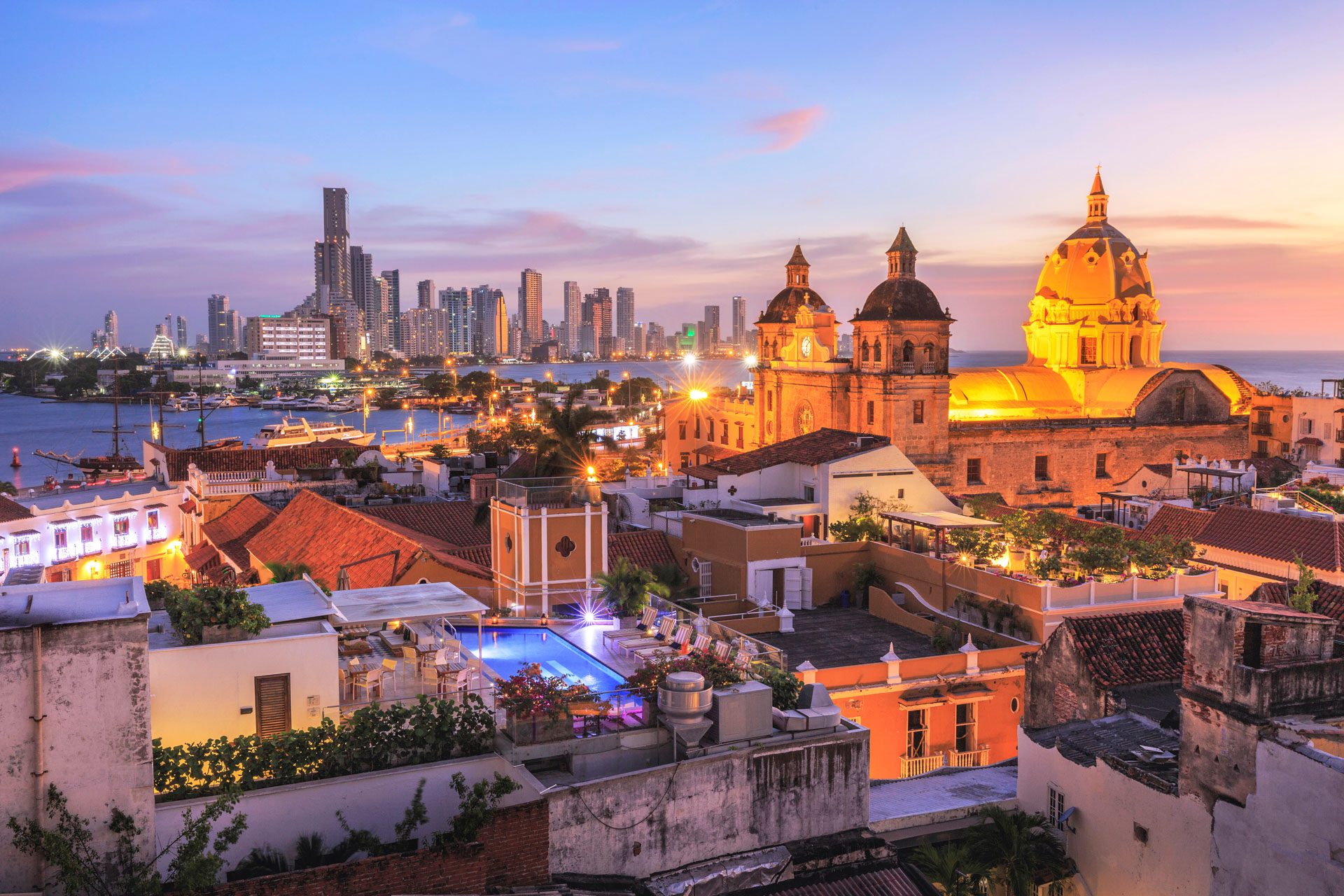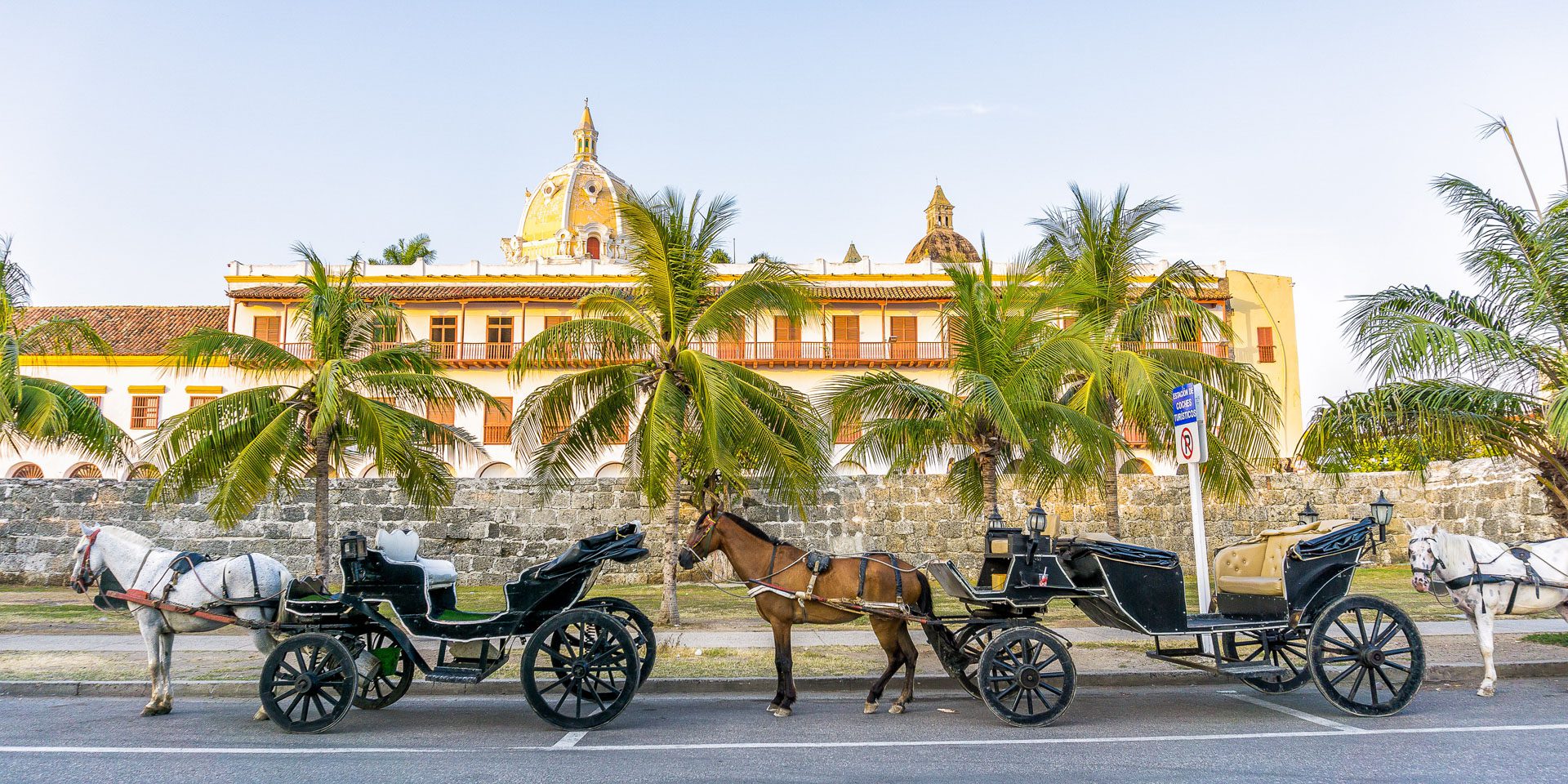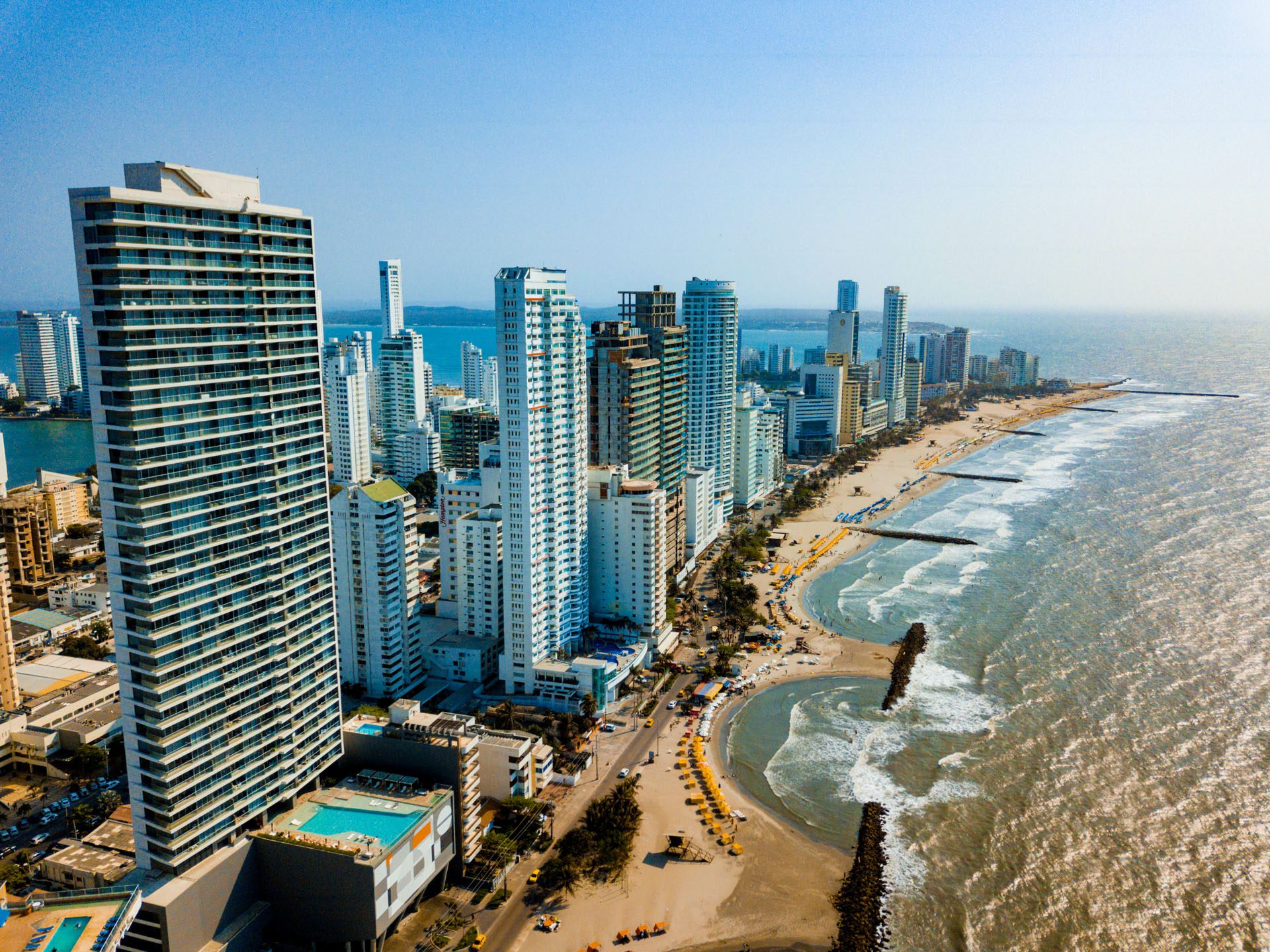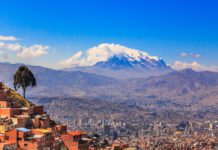Draped like a cape across Colombia’s Caribbean coast, the port city of Cartagena is a lively mix of Spanish culture, colonial history and carefree beach life – and it’s catching on.
The city of red tiled roofs, vibrant house colors, horse-drawn carriages, cobblestone streets and salsa is suddenly on everyone’s must-see list.
In the 16th century, the Spanish built walls around the city of Cartagena for protection. Those walls still stand and form the boundaries of the old walled city, entered through the celebrated city gate below one of Cartagena’s most recognizable landmarks, the Clock Tower, which, like many of the city’s buildings, is bright yellow.
Inside the walled city (also known as Centro), the remarkable Catedral Santa Catalina de Alejandria is full of towering arches and massive beams culminating in a large spire, which when lit at night, is a sight to behold. Another 400-year-old yellow landmark.
Because the Centro is so walkable, you’ll no doubt come across women posing with bowls of fruit on their heads. They’re called palenquera ladies and you’ll know them by their wildly colorful dresses. Good photo op for a few pesos.
As the historic crossroads for traders bringing goods to South America from Europe, Cartagena became a melting pot of Latin, indigenous, Afro-Colombian and Middle Eastern cultures. This marinade is reflected in the city’s many diverse restaurants. One not to miss is La Cevicheria, specializing in newly caught seafood combined with local flavors. It was a favorite of Anthony Bourdain, as was the fabulous Mercado Bazurto, a madhouse of a market where only the freshest of culinary ingredients are found.
Right across from the Clock Tower is sweets street – El Portal de los Dulces. Here, vendors sell homemade panela and coconut cookies, guava jellies and yummy dulce de leche.
For a change of pace, visit the working class neighborhood of Getsemani just outside the Clock Tower. It’s an area in transition trending toward bohemian with hip hostels, artsy cafes, a raging nightlife, and eclectic street art, street murals and street musicians.
Visible from almost everywhere in Cartagena and lit at night, Convento de la Popa is perched on a hill known as Mt. Popa, high above the city. The views are outstanding.
It’d be tough to be the jewel of the Caribbean and not have beautiful beaches. They’re outside the city – a short boat, car or bus ride away. Playa Blanca lives up to its billing with powdery white sand and stunning turquoise water. A little further out, the Rosario Islands are actually an archipelago with exceptional swimming, diving and shelling. Closer in, Boca Grande looks like Miami Beach when viewed from Cartagena with its tall stylish hotels and wide beaches.
Day trips from Cartagena take the intrepid to the famous Magic Mud Volcano, where total immersion is expected. The warm mud is thought to be therapeutic and yes, towels and water are provided.
What to buy: The three beverages Colombia is known for: coffee, rum and aguardiente (an anise-flavored liquor). The chocolate is top notch, the cigars are primo and the local crafts are stunning, like brightly-colored single-thread Wayuu Mochila shoulder bags.
Where to stay: For a Caribbean beach experience, the Sofitel Baru Calablanca Beach Resort on Isla Baru offers three restaurants, seven bars and a spa. For a more historic feel, the Casa San Augustin entices with colonial architecture, a courtyard pool and a lush rooftop terrace. And for the ultimate, the Sofitel Legend Santa Clara Cartagena is the undisputed grand dame in the heart of Centro. The impressive former convent is filled with patios, gardens and all the amenities in an atmosphere of French savoir-faire.
